MARKET OVERVIEW
The global advanced lithium-Ion battery market is going to define a new industrial story, but it is going to be driven by the needs of the time, not trends. The industry, based on intricate electrochemical systems, is on the trajectory which matches far beyond the realm of consumer gadgets and electric vehicles. What the future holds will not be merely energy storage it will be the transformation of how energy is utilized, transferred, and maintained in key industries yet to wholly develop or reach maturity. As the boundaries of conventional power infrastructures become increasingly apparent, the demand for next-generation lithium-ion batteries will shape a future spanning much further than what they are presently called upon to do.
In the coming years, the global advanced lithium-Ion battery market will see its uses spreading into defense technologies, space exploration, and high-demand grid infrastructures. Although the current emphasis is going to continue at present with an increase in energy density and efficiency charging, tomorrow's needs will necessitate systems operating under extreme stress, zero-failure conditions, and isolated ecosystems. The batteries designed for these future applications will have to withstand radiation, use in extreme temperatures, and provide even power with unprecedented reliability.
New materials will be investigated not just for price but for the potential to close performance gaps that incumbent systems are not capable of filling. The evolution of lithium-ion battery chemistry, such as the adoption of solid-state technologies, will take the industry on uncharted paths. These developments will not only reshape performance levels but also spur production methods into embracing traceable and sustainable resource sourcing, which will be critical towards acquiring approval within global regulation regimes. Recycling will no longer be an after-process but will be a part of design, promoting cradle-to-cradle engineering rather than today's linear life cycles.
The global advanced lithium-Ion battery market will also have an interaction with artificial intelligence and predictive analytics that has not yet happened. Battery management systems will become intelligent platforms that can self-adjust, predict anomalies, and make decisions. This will be applied to sectors like autonomous shipping, smart aviation, and decentralized energy networks, where downtime and failure have massive implications.
Further, the geopolitical situation will start affecting the future of this market in a more direct manner. As nations attempt to achieve energy independence, the need for proprietary battery technologies will result in strategic partnerships and international competition based upon intellectual property and raw material dominance. The global advanced lithium-Ion battery market will be at the nexus of science, security, and diplomacy, where governments will become stakeholders as well as gatekeepers.
Outside the scope is not just technological advancement but a change in mission. Future batteries will not only be designed to last longer or power up faster but to address system issues disaster relief, humanitarian aid distribution, off-grid medical care, and climate resilience. Essentially, the global advanced lithium-Ion battery market will not simply power gadgets or vehicles. It will fuel opportunities redefining systems that enable human progress under duress, alone, and in scale.
Global advanced lithium-Ion battery market is estimated to reach $173.8 Million by 2032; growing at a CAGR of 16.3% from 2025 to 2032.
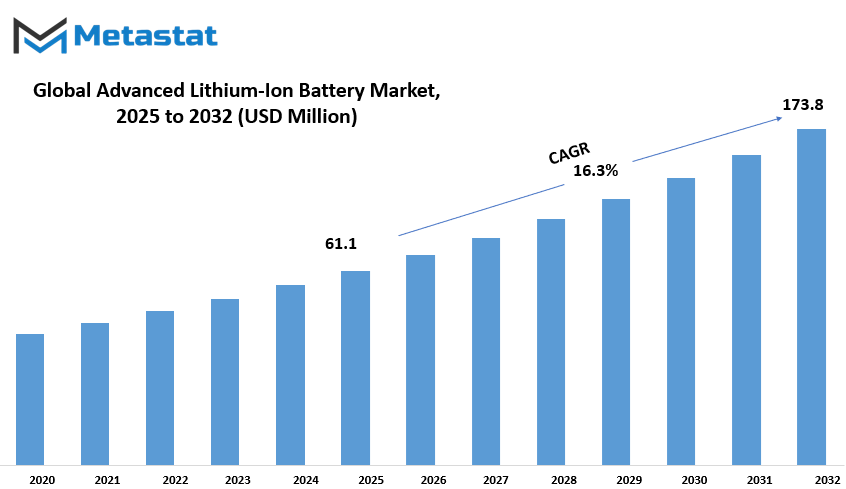
GROWTH FACTORS
The global advanced lithium-Ion battery market is growing gradually, the main reason being the rising demand for electric vehicles and increasing applications of renewable energy systems. With more people possessing electric vehicles and solar power and wind power becoming increasingly popular, demand for efficient and efficient energy storage is also rising to fame. Lithium-ion batteries are in demand nowadays as they are lighter in weight, fast to charge, and longer-lasting compared to other battery technologies. It is therefore the best option for both electric vehicles and renewable energy storage systems. Electric vehicles are no longer a passing craze.
As there is increasing fear about global warming and pollution, most countries are promoting cleaner alternatives to gasoline-driven cars. This need has prompted car manufacturers to invest heavily in electric vehicle technology. As a result, markets for lithium-ion batteries have taken off. Likewise, windmills and solar panels need to be able to store energy efficiently for deployment during periods of cloud cover or low winds, and lithium-ion batteries offer an easy solution to that need. The market is not problem-free, though.
Volatility of prices of key raw materials such as cobalt and lithium is most critical among all the issues. They are not only scarce but also costly to produce and process. Fluctuation in their price or supply can possibly influence the total cost of production of lithium-ion batteries. Safety is another issue of concern. While lithium-ion batteries are safely designed, under certain conditions they tend to overheat and experience thermal runaway or even burning. Such conditions have attracted the attention of consumers and manufacturers alike, prompting companies to seek alternative safety or more efficient designs. One of the paths pursued is that of solid-state lithium-ion batteries.
These batteries replace the liquid electrolyte with a solid one in hopes of reducing the risk of fire and extending the life and performance of the battery. Solid-state batteries are already in testing and development but hold enormous potential as a safer and more efficient option. Should these batteries be able to be mass-produced at an affordable price, they could completely change the way energy is stored in the future. The Global Advanced Lithium-Ion Battery industry will continue to grow in the future with improvements in technology and increasing demand. With increased investment and research, this industry can overcome existing hindrances and develop new opportunities for cleaner transport and energy.
MARKET SEGMENTATION
By Material
The global advanced lithium-Ion battery market is continuously growing with expanding demand for effective and long-term energy storage. Being the greatest source of energy and weighing balance, lithium-ion batteries are physiological for being used in electronic devices, electric vehicles, and renewable energy systems. Hence, as these electric solutions become more favored in varied industries, the demand for efficient batteries will increase along.
Material is one of the key parts of a lithium-ion battery. In this industry, the material category is further broken down into Anode Materials worth $34.2 million. The materials are responsible for the majority of the function of the battery to store and discharge energy. A high-quality anode enables the battery to charge quickly and have more duration. Typical anode materials are graphite and, more recently, silicon-based counterparts that enhance energy capacity. With increasing technology, manufacturers are developing anode materials that are stable and more efficient, and these will result in improved battery performance.
Cathode Materials are also critical and are held accountable for the performance and lifespan of the battery. These are usually combinations of nickel, manganese, and cobalt. The higher energy storing capacity particularly benefits electric vehicles and large energy storage systems. There is an ongoing pursuit for making these materials safer and environmentally-friendly without compromising the performance of these materials. Now that clean energy is more in vogue, various companies are investing money to establish cathode materials that, while environmentally friendly, still can perform equally.
One major driving force for the global advanced lithium-Ion battery market is the burgeoning demand for electric vehicles. Governments all around the world provide subsidies and enforce tougher emissions rules to encourage electric transport. This will compel automobile manufacturers to enhance battery systems to confer longer ranges on a charge and quicker charging times. As the shift towards this trend goes on, there will be a higher demand for improved cathode and anode material.
Aside from electric cars, lithium-ion batteries are increasingly being used in solar and wind power systems. The renewable energy sources must be stored so that the amount of energy supply remains stable, particularly when there is no sunshine or wind. High-quality material batteries will make the storage capacity and reliability of these systems better.
Overall, things are looking bright for the market of high-end lithium-ion batteries in the future. New materials are being researched and there is still growing demand, so the market will continue to grow at a robust pace. The emphasis will be on making batteries safer, more robust, and less expensive for mass use.
By Application
The global advanced lithium-Ion battery market continues to expand as the need in a few major industries increases. The market consists of batteries for Electric Vehicles (EVs), Consumer Electronics, Energy Storage Systems, and Other uses. Each of these sectors steers the trajectory of this technology independently, thereby fostering innovation and production along diverse paths.
The global advanced lithium-Ion battery market sees greatness from EVs. Governments increasingly working on green transportation methods and automotive manufacturers now focusing on electric variants have contributed to the enhancement in demand for efficient, high-capacity batteries. They are used in greater measure for EVs because they are light and hold much more load than the older generation batteries. The market is expected to further flourish as more countries announce plans to ban gasoline cars in lieu of electric options.
The consumer-electronics industry does carry heavy demand for lithium-ion batteries. Smartphones, laptops, tablets, and wearables all require compact secondary batteries with a longer interval between charging. Users expect to have fast performance and longer battery life, and so manufacturers are instilled with more commitment towards improving the batteries. This continuous demand for enhanced performance and user satisfaction will keep consumer electronics as a large slice of this market.
Another potential field is that of Energy Storage Systems. These systems are designed to help store energy from renewable sources such as solar and wind that are not unconditionally consistent. If in need, lithium-ion batteries will allow that energy to be stored for when the weather turns bad. This stabilizes power supply and supports the transition towards clean energy. With more houses and commercial establishments utilizing solar panels and other renewable means, the demand for storage systems shall increase.
The "Other" category covers a variety of smaller applications which nonetheless contribute increasingly to the overall market. This sort of category consists of tools, medical devices, drones, and UPSs. While perhaps not as large as EVs or electronics for scale, theirs is a development with growing numbers and market demand.
By End User
The demand for energy storage in a range of industries is steadily increasing the global advanced lithium-Ion battery market. Various end users of lithium-ion batteries are primarily responsible for development. One of the main sources of demand in the main areas is the automobile region. Autometer's are investing significant in lithium-ion battery technology as electric vehicles become more and more popular worldwide. These batteries are essential for today's electric cars because due to their better performance, long border and rapid charging time. The market will continue to grow in the coming years due to this change towards cleaner, more efficient journey.
Another important stimulation is the electronics industry. Lithium-ion batteries are required for the operation of consumer electronics such as tablets, laptops and smartphones. They are small, simple to charge, and long lasting compared to their ancestors, and they are extremely suitable for portable electronic devices. With more and more people, there is a growing demand for long -term high -performing batteries, with more and more people start using equipment, with equipment. It has been observed that technology firms have taken ahead in advancing the battery in an attempt to meet customers' performance and endurance demands.
The energy industry is also pioneering the way to advance this industry. Solar and wind are a renewable form of energy, but they do not necessarily have set times to find themselves so it is therefore extremely crucial to save energy. Lithium-ion batteries save the power produced in a manner that can be tapped at any time. They assist in moderating energy supply and demand and aid in developing cleaner, more secure power systems. Governments and private organizations are currently focused on energy storage systems and, therefore, demand for advanced batteries is increasing.
Besides these sectors, others like aerospace, medical equipment, and industrial tools are also employing the use of lithium-ion batteries. These batteries are selected due to their long lifespan, safety, and high energy density, which suits them for a myriad of applications. With technology advancing and prices reducing, more sectors are likely to embrace this option.
Overall, the global advanced lithium-Ion battery market is shaped by many different end users, all adding to its gradual expansion. From driving electric cars, to supporting clean energy, to charging our electronics, lithium-ion batteries are becoming an intrinsic part of life in the contemporary world and will increasingly become more so in the future.
|
Forecast Period |
2025-2032 |
|
Market Size in 2025 |
$61.1 million |
|
Market Size by 2032 |
$173.8 Million |
|
Growth Rate from 2025 to 2032 |
16.3% |
|
Base Year |
2024 |
|
Regions Covered |
North America, Europe, Asia-Pacific, South America, Middle East & Africa |
REGIONAL ANALYSIS
The global advanced lithium-Ion battery market is divided into several major areas that help companies and researchers understand where demands, growth and investment are taking place. These regions include North America, Europe, Asia-Pacific, South America and Middle East and Africa. Each of these large areas is broken further to give a clear picture of their individual markets. In North America, partitions are built in the United States, Canada and Mexico. All three countries play an important role in the development and use of lithium-ion batteries, especially in electric vehicles and energy storage systems.
Europe is another important region, divided into UK, Germany, France, Italy and the rest of Europe. The countries of Europe are focusing more on reducing carbon emissions and increasing the use of renewable energy, causing increasing interest in advanced battery technologies. Germany and the UK, in particular, have seen strong developments in battery manufacturing and research. France and Italy also show stable demand, and the rest of Europe continues to progress in clean energy efforts.
Asia-Pacific holds a major part of the global market and is divided into India, China, Japan, South Korea and the rest of the Asia-Pacific. China leads the region due to its strong manufacturing base and government support for electric vehicles and green technology. Japan and South Korea are also prominent players, who are known for their technological innovations and contribution to battery quality and safety. India is looking at the increased investment in electric mobility, while other countries of Asia-Pacific are following similar routes as they are aimed at modernizing their energy and transport sectors.
South America includes Brazil, Argentina and the rest of South America. While this region is still developing compared to others, interest in adopting clean energy solutions is increasing, especially in countries like Brazil. As the demand increases, these countries will play a big role in future.
The Middle East and Africa is divided into GCC countries, Egypt, South Africa and the Middle East and the rest of Africa. Although the region is not yet a major market, interest is increasing, especially in countries looking to transfer from oil dependence to cleaner options. South Africa and Egypt are looking for ways to improve their energy infrastructure, and GCC countries are investing as part of their long -term development plans in future energy technologies.
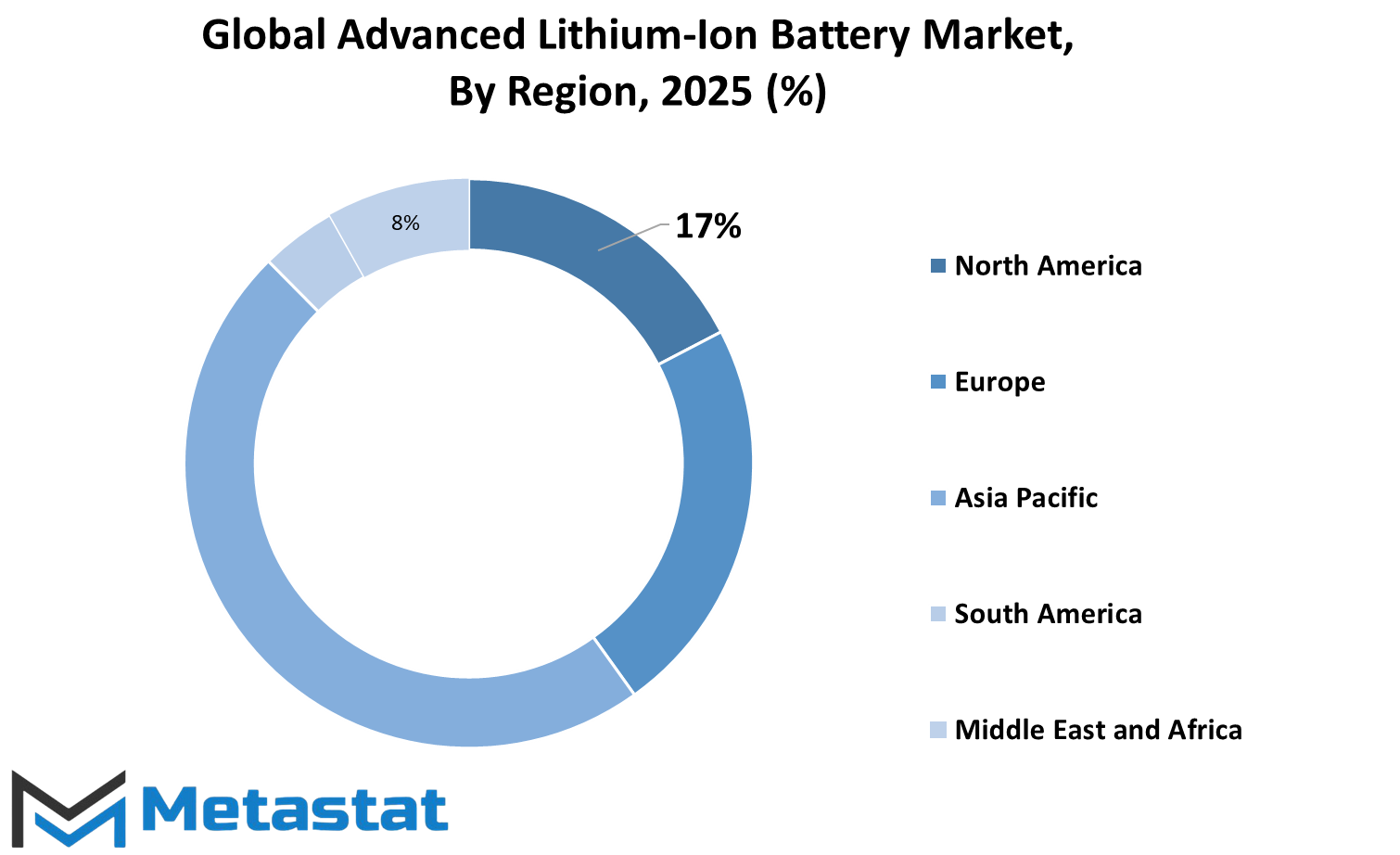
COMPETITIVE PLAYERS
The global advanced lithium-Ion battery market is evolving, with a significant number of big players driving its expansion. Johnson Energy Storage, Inc., Samsung SDI Co., Ltd., and 24M are prominent players driving this effort through research, innovation, and business partnerships. Enovix Corporation and Wanxiang A123 Systems Corp. are also involved in pushing this by availing new technologies used to improve battery functionality, safety, and life. These companies are not only producing electronics batteries but are also moving into electric vehicles, energy storage devices, and industrial applications, making lithium-ion batteries the most convenient batteries ever.
As the demand for clean energy and electric mobility continues to rise, firms such as Echion Technologies Ltd., GS Yuasa Lithium Power, and EnerSys are responding by creating faster charging and more effective battery systems. These companies hope to overcome common setbacks of overheat, slow charge, and high production cost. The research and development of these firms will decide how fast lithium-ion batteries get established as the standard across more applications.
NEC Energy Solutions and Blue Solutions SA are pushing competition through innovative manufacturing and design techniques. Each company does something different, whether safer chemistry, cycle life, or small size. The pressure from competition is high, and that forces these companies to continue testing and coming up with better materials and battery designs. Excell Battery Co. and Wuhan FANSO Technology Co. Ltd. also participate in this race, offering customized solutions for small and big demands.
Group14 Technologies, Inc., and Sila Nanotechnologies Inc. are focusing on material science, most notably using silicon to replace graphite as a battery anode. This shift can produce higher energy storage capacity and longer battery life, both of which are what customers desire when looking for long-term value. Saft Groupe S.A. is another important business that is highly recognized for its commitment to high-quality batteries for aerospace, defense, and industrial applications.
Together, the firms are transforming energy storage. Their technologies not only promise to transform lithium-ion batteries in terms of performance but also bring them to within reach of businesses and consumers worldwide in terms of cost. As new challenges arise, the players will most likely continue evolving their technologies to meet changing market needs. Their efforts will remain a dominant force in the direction the world's energy industry is taking.
Advanced Lithium-Ion Battery Market Key Segments:
By Material
- Anode Materials
- Cathode Materials
By Application
- Electric Vehicles (EVs)
- Consumer Electronics
- Energy Storage Systems
- Other
By End User
- Automotive
- Electronics
- Energy Sector
- Others
Key Global Advanced Lithium-Ion Battery Industry Players
- Johnson Energy Storage, Inc.
- Samsung SDI Co., Ltd.
- 24M
- Enovix Corporation
- Wanxiang A123 Systems Corp.
- Echion Technologies Ltd.
- GS Yuasa Lithium Power
- EnerSys
- NEC Energy Solutions
- Blue Solutions SA
- Excell Battery Co.
- Wuhan FANSO Technology Co. Ltd.
- Group14 Technologies, Inc.
- Sila Nanotechnologies Inc.
- Saft Groupe S.A.
WHAT REPORT PROVIDES
- Full in-depth analysis of the parent Industry
- Important changes in market and its dynamics
- Segmentation details of the market
- Former, on-going, and projected market analysis in terms of volume and value
- Assessment of niche industry developments
- Market share analysis
- Key strategies of major players
- Emerging segments and regional growth potential



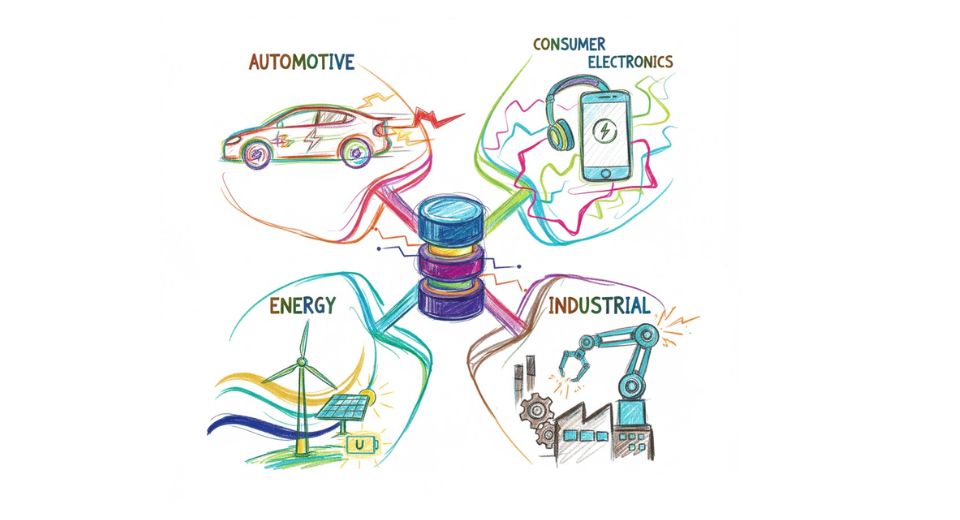
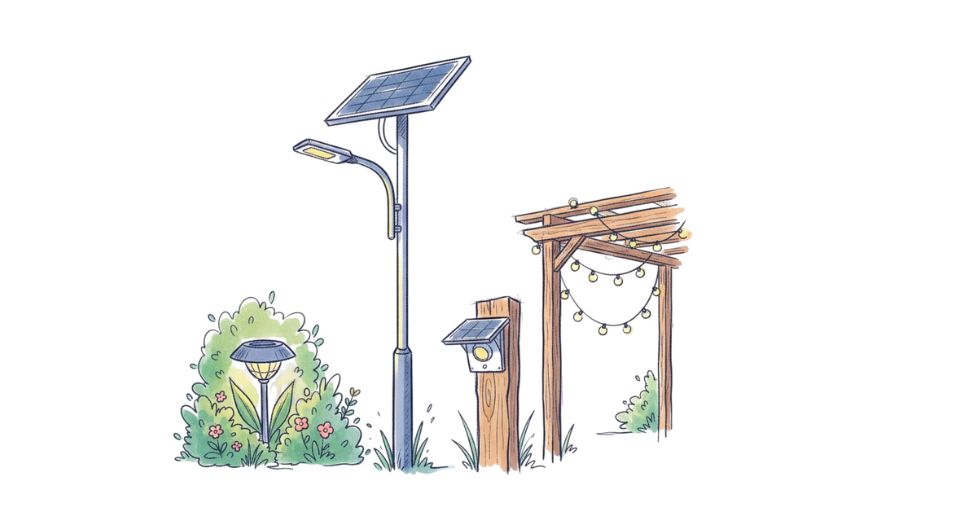
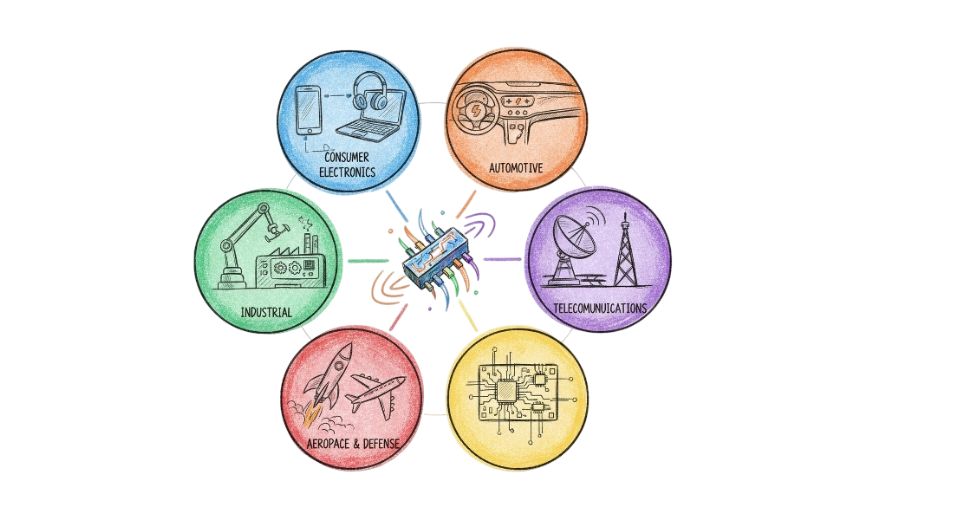
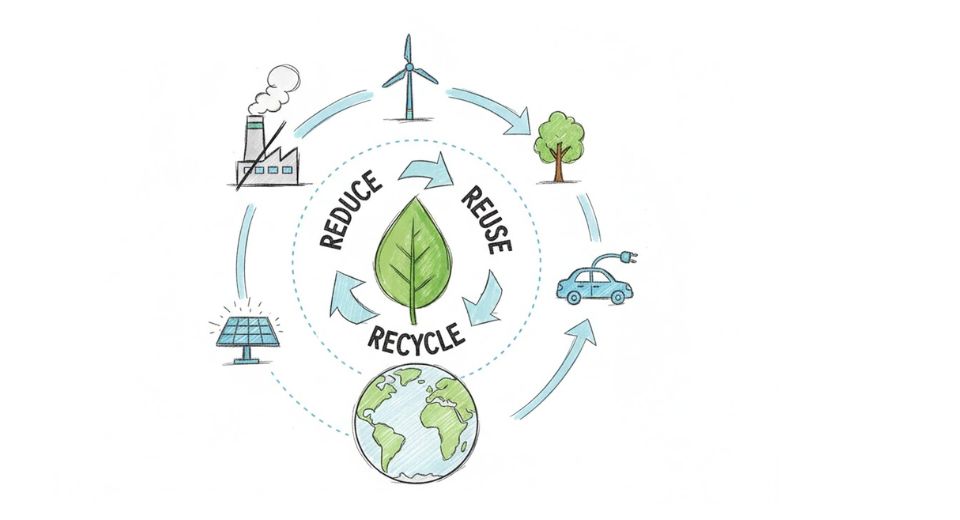

 US: +1 3023308252
US: +1 3023308252






